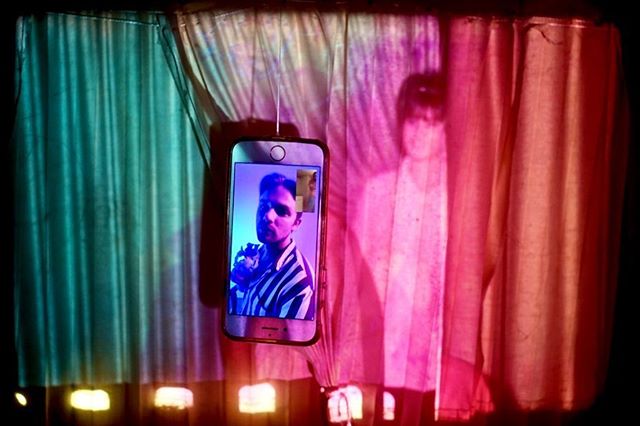A new online exhibit featuring alumnus Zachary Z. Handler’s pandemic portraits of friends and strangers makes the most of a challenging situation.
What have you missed most during the pandemic? For many, it’s the freedom to move about the neighborhood safely, to interact with complete strangers on the street—and the magical potential of turning those strangers into friends.
Since last April, artist Zachary Z. Handler ’03, visual arts, has harnessed the creative constraints of lockdown to meet and get to know hundreds of people around the world. And by weaving video chat conversations together with DIY props and dioramas pulled from his own home, he has created a collection of nearly 300 intimate portraits to reflect that shared experience.
“Photography, for me, has always been like a gift exchange, and ERRANDS has definitely proved this true in so many, unexpected ways,” said Handler, who by day works in health care with the Deaf and Hard of Hearing Community, and who captures his subjects within the frame of an iPhone with a clear amber-colored case. “From its inception, ERRANDS was always more about the conversation we have during the call. The set-up and portrait we take are a bonus; a time capsule of this shared moment in our lives. That’s the gift. Each session is the most wonderful gift.”
A selection of Handler’s work—including behind-the-scenes peeks into his process—is now on display in ERRANDS, the first in a series of online exhibits offered by the Albin O. Kuhn Library & Gallery. Handler, a Linehan Artist Scholar, will give a virtual artist’s talk for the public at noon on February 18.
“The Library Gallery traditionally plays an important role in the intellectual, creative, and social life at UMBC. To continue filling these roles during the closure of UMBC’s physical campus, we are presenting opportunities to engage with photography and the creative community through virtual exhibitions and events,” said gallery curator Emily Cullen ’06, visual arts. “We especially hope that our effort to connect our audiences with artists and share new work and ideas offers respite and inspiration amid all the challenges of the past year.”
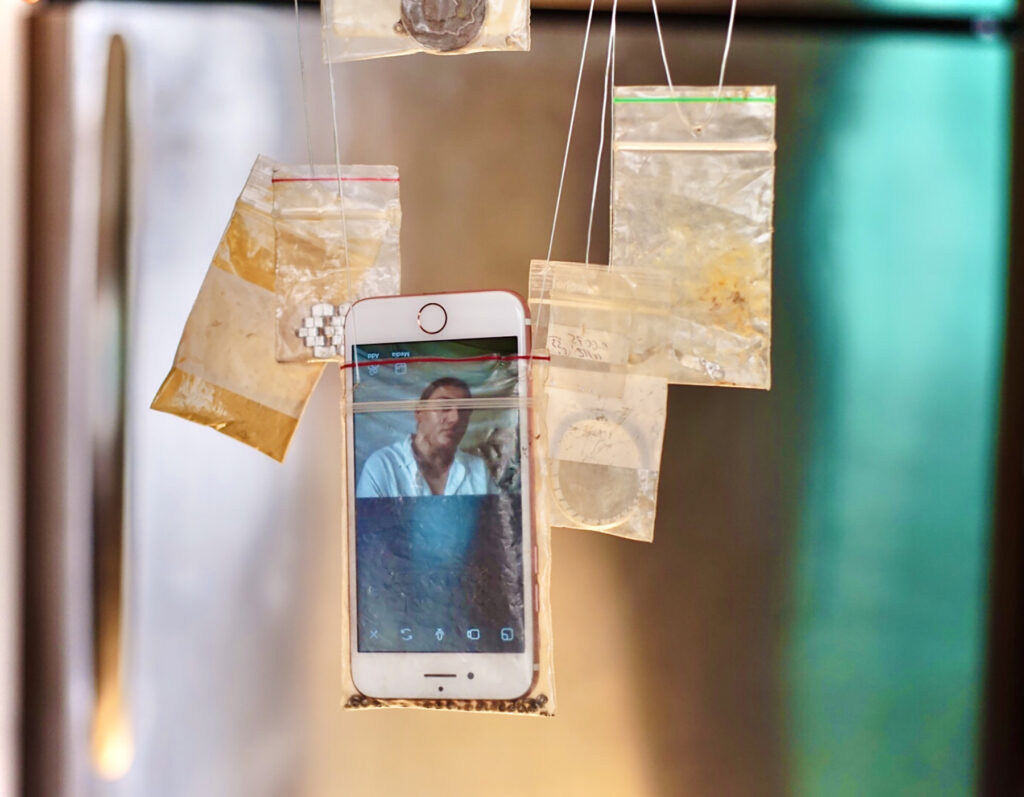
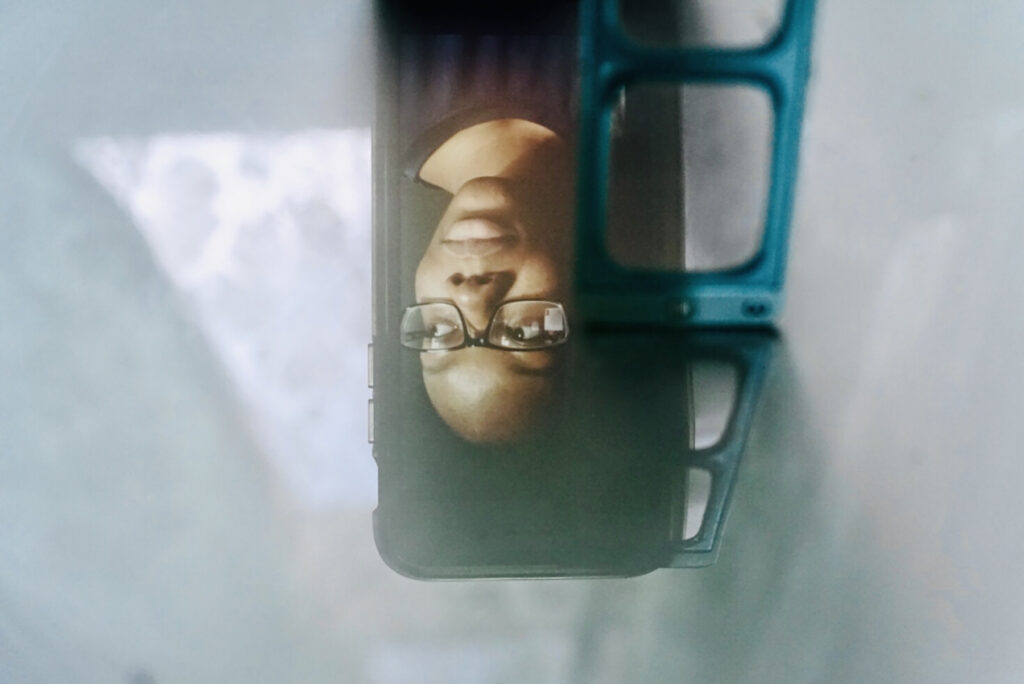
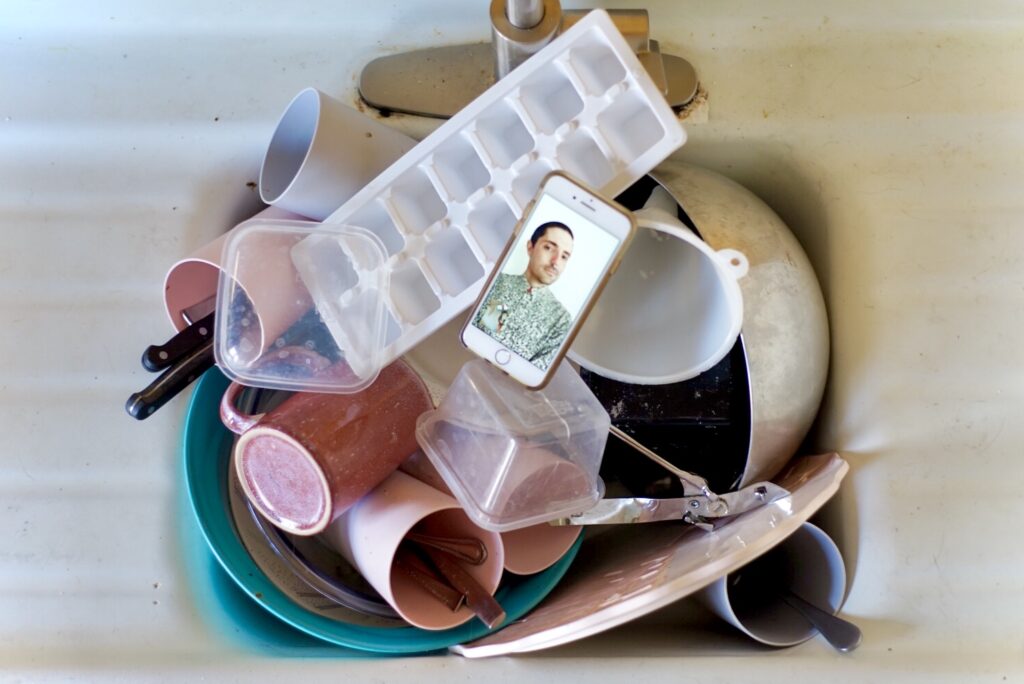
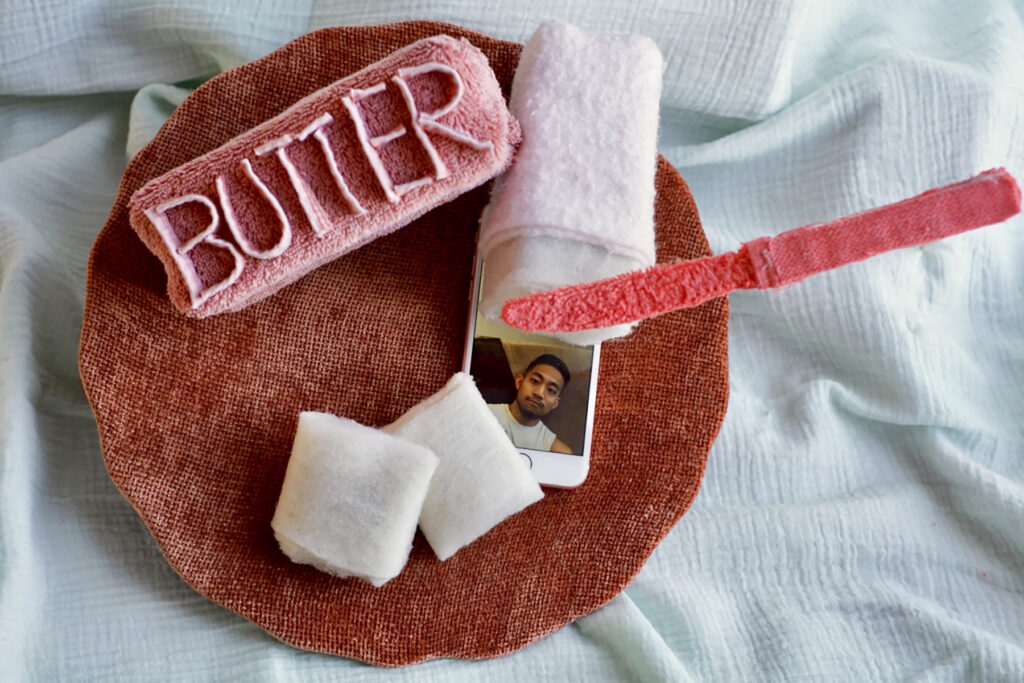
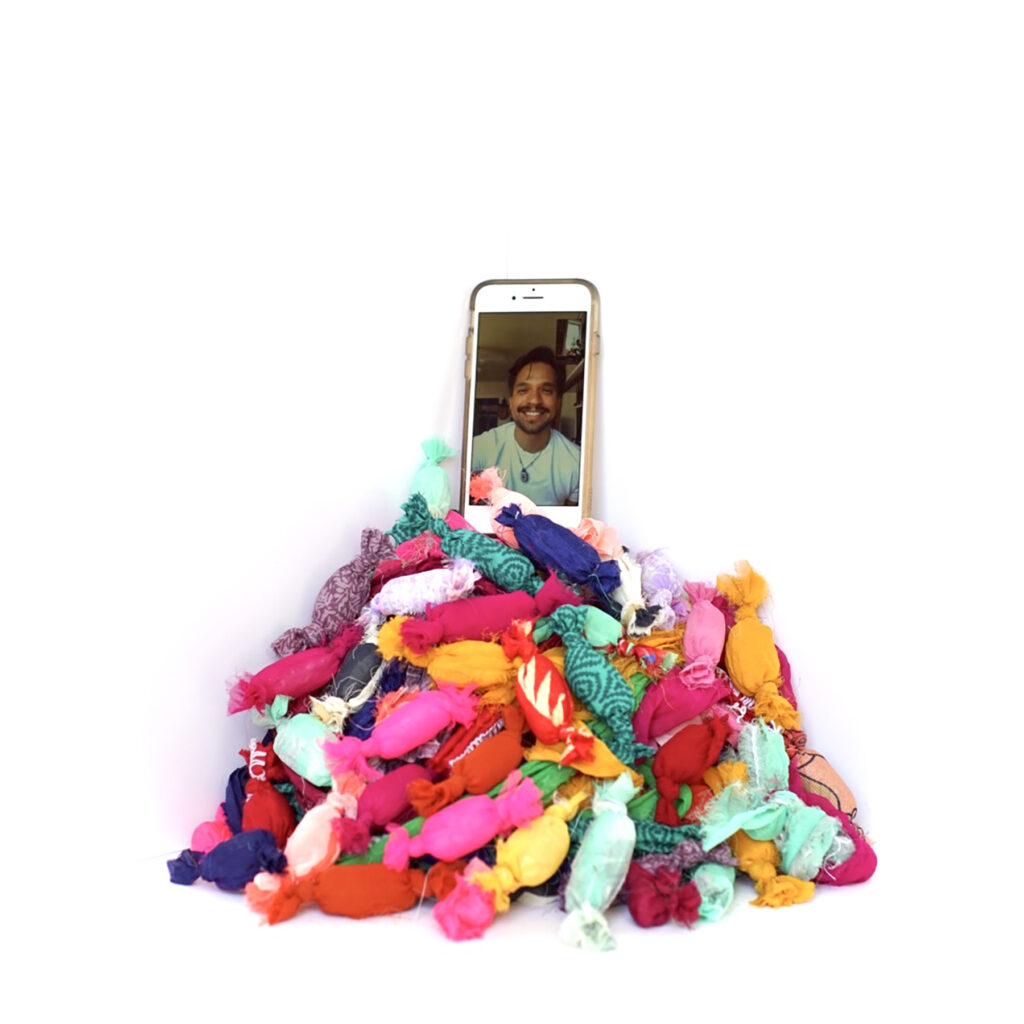
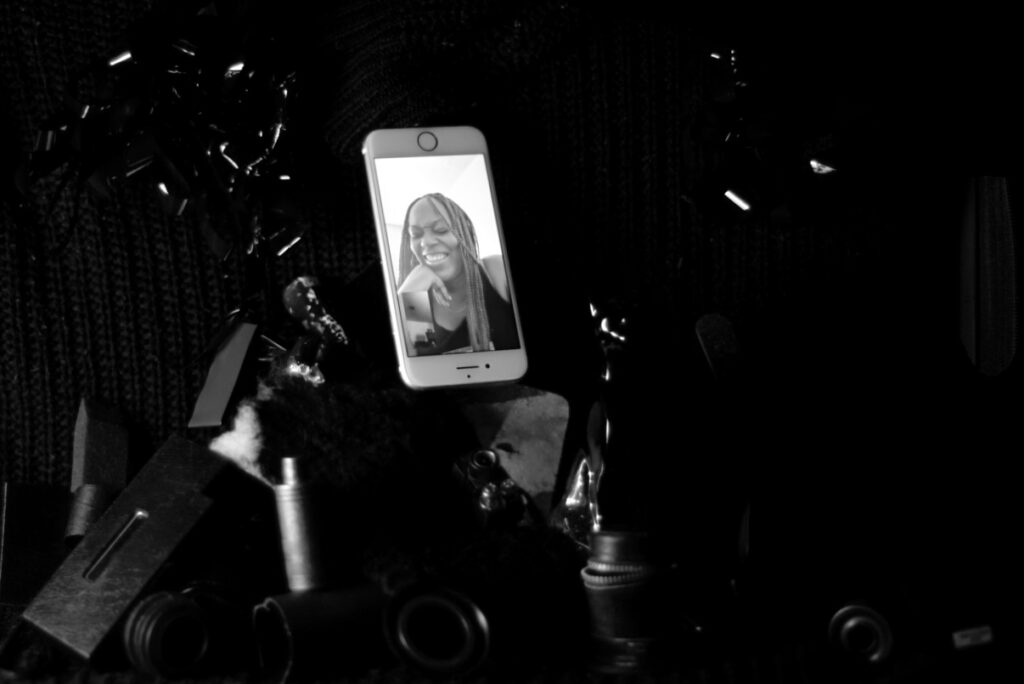
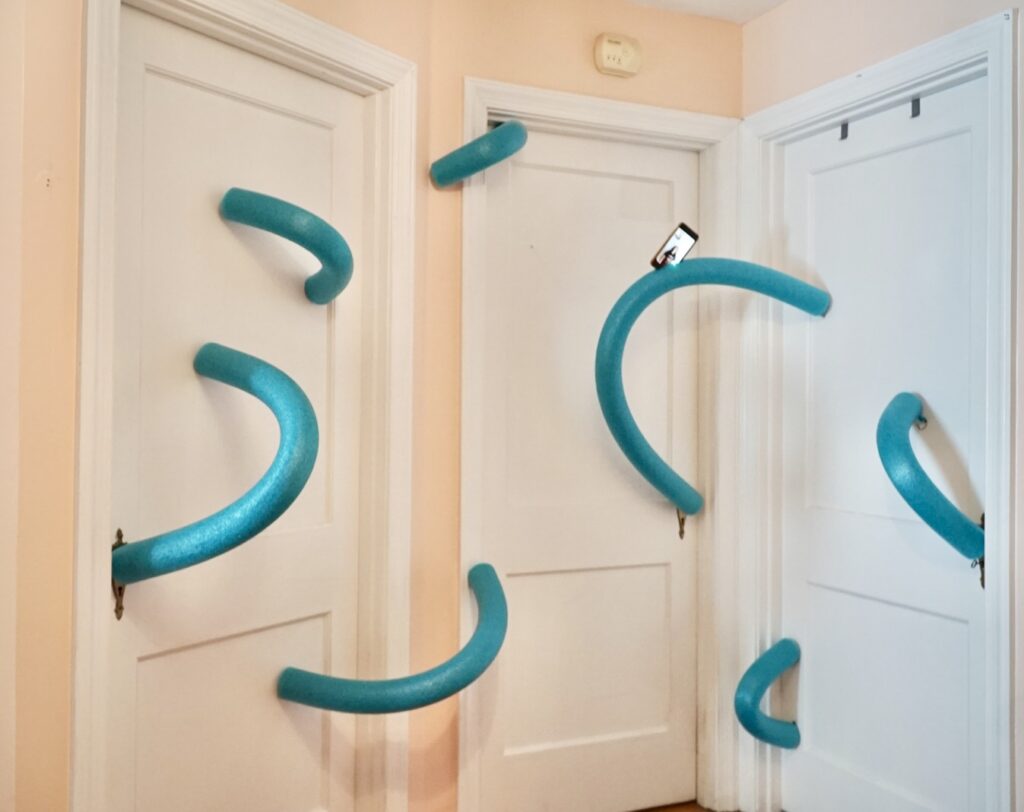
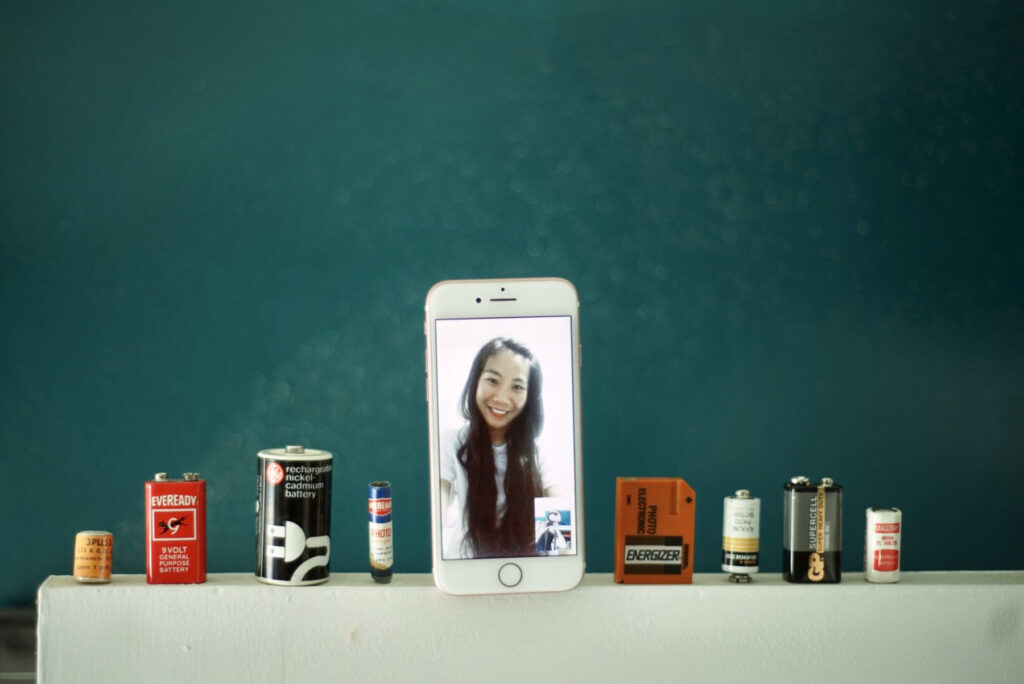
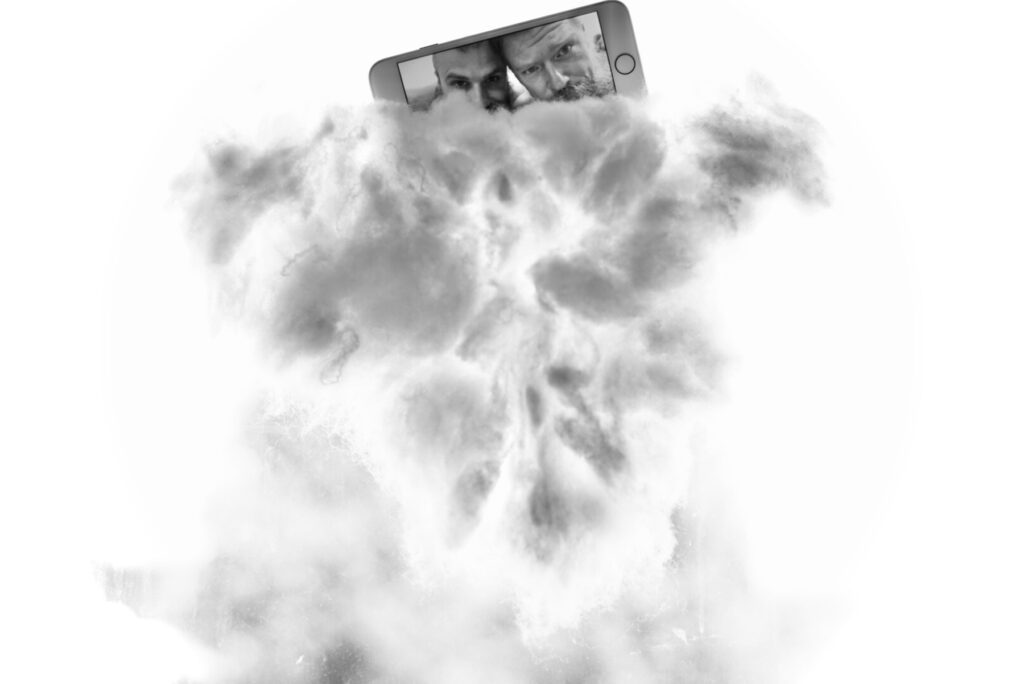
That spirit of connection comes through with every piece Handler creates. At the beginning of the pandemic, he began offering portrait sessions to anyone who asked. He posted them on Instagram a few at a time, and the project took off from there, to the point where he was scheduling six to eight 30-minute sessions a night after a full work day—with many more on the weekends, and each encompassing entirely new and different props, feelings, and experiences. He even recruited fellow alum Kiirstn Pagan ’11, theatre, for help with graphic design to accompany the project.
While Handler loves the chance to talk with so many people, he also finds great joy in using the existing objects in his home to build dioramas and make tiny props from scratch. One night he might be stacking slices of white bread or piling frozen peas around the phone. The next, he might be fashioning a butter dish and plate from terry cloth, or pulling the elastic from a pair of underwear to create five tiny sets of shoelaces for only-slightly-larger pairs of Converse All-Stars. It’s a peculiar pandemic-driven sensibility that really resonates with Handler.
“I think it was born out of the pandemic in the sense that I wasn’t going into stores and I didn’t want to spend money when I didn’t need to. I’d rather give that money to charities or fundraisers,” he said. “Plus I’d rather the challenge of repurposing what I already have in my house to make my sets. It worked more for the aesthetic of being quarantined.” Handler adds, “I’m more of a thrift store person than a boutique store person anyway. That’s very much my personality. I just love that objects carry meaning and stories when we receive them, and then once we pass them onto someone else, we get to add that story. “
One such beloved object—a musical album—came into play in Handler’s portrait of Carlyn Thomas ’13, visual arts, with whom he co-curated the exhibition and queer performance series, Miami is Nice, at Space Camp gallery in Baltimore a few years ago. In Thomas’ portrait, Handler evokes the cover of a Christine and the Queens album—a musical artist they both adore—with Thomas as Christine surrounded by a frame of squiggled yellow icing.
“I loved it,” said Thomas. “The month my portrait was taken was June, which is widely known as Pride month and was also around the same time that I came out as non-binary (I actually came out to Zach on that very call), so it felt very affirming for me to see myself reflected and represented in a way that gave me gender euphoria, and was just an honor to be compared to Chris. I think the finished portrait encapsulates a lot of things about Zach and I’s friendship and it’s very special to me. Icing is also just so much fun and yellow is my favorite color!”
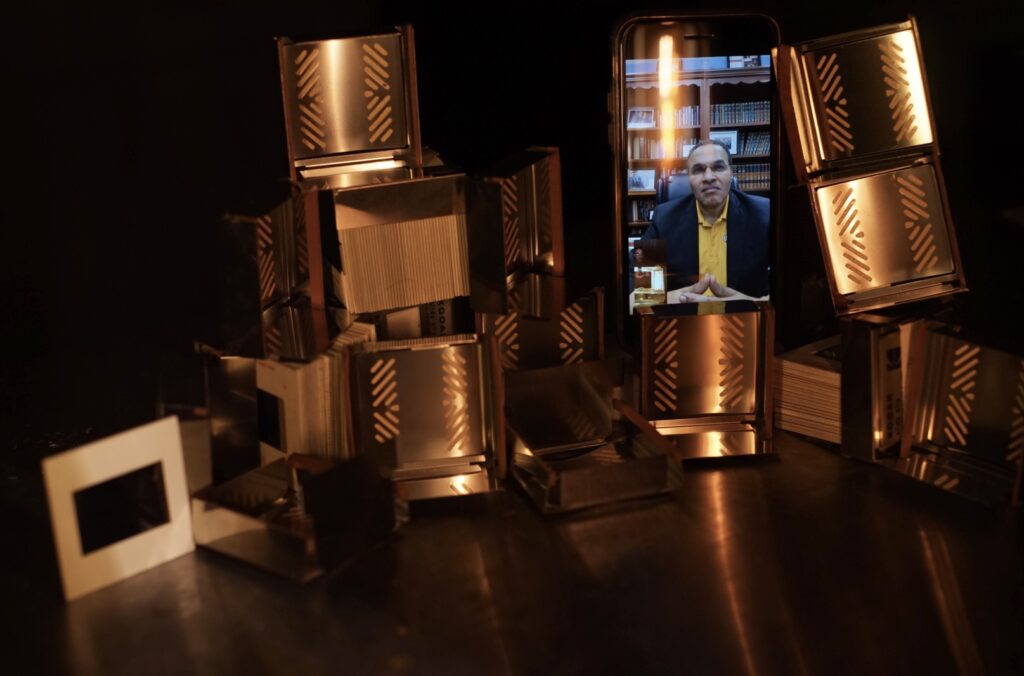
As a special treat for Retriever audiences, Handler also sat with UMBC President Freeman Hrabowski for a portrait session where they explored shared memories of an interaction on campus in the days just after September 11, 2001. As a photographer for the campus newspaper, Handler recalled snapping a photo of Hrabowski—a personal moment that stuck with both of them and remains in newspaper ink to this day.
“Zachary surprised me by bringing me into the process to reflect on the human condition during this challenging time,” said Hrabowski, whose portrait by Handler shows him surrounded by boxes of precious family slides. “I found myself having a substantive conversation with him about our experience years ago when he was a student at UMBC and our campus, along with the rest of the world, was reacting to the 9/11 tragedy. As he talked, he brought me back to the feeling of grabbing for hope in the midst of a storm, and I realized that we human beings go through these periods, and we get through them because of our connections to others. Zachary was masterful.”
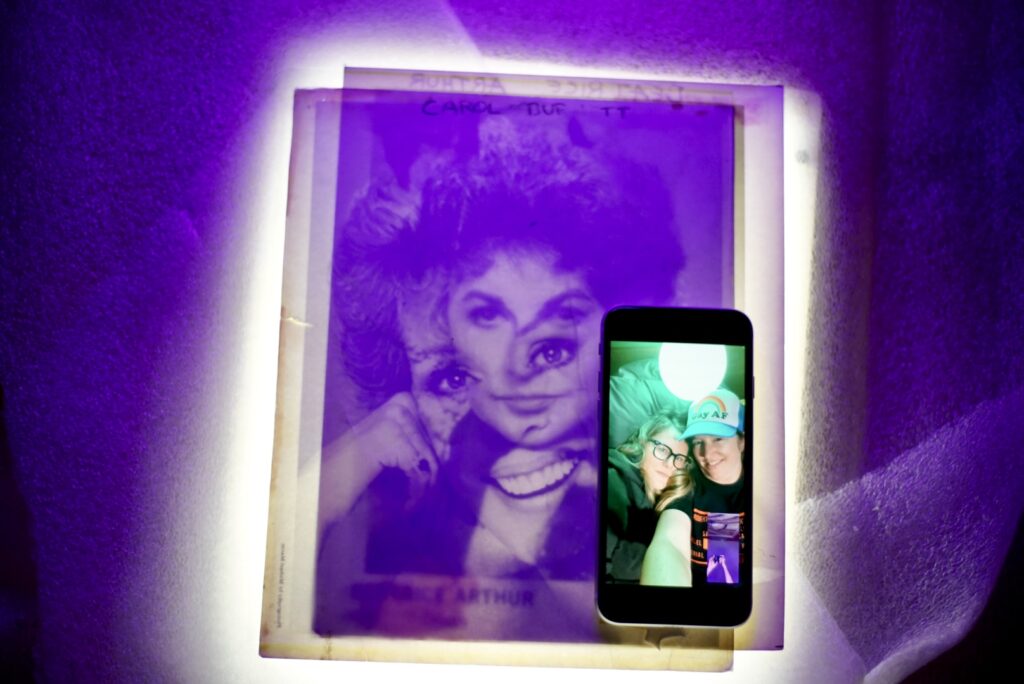
ERRANDS is online now through February 28, and Handler will give a public artist’s talk on Thursday, February 18, at noon. American Sign Language interpretation will be provided. Visit https://librarygallery.umbc.edu/zach-handler-errands/ for more information about this exhibit and upcoming shows. See more of Handler’s work on Instagram or at www.zzhandler.com.
Header image: Zachary Z. Handler, Samuel Cullman. Alabama, USA. 2020. From the series ERRANDS. Courtesy of the artist.
Gallery of images, left to right, top to bottom: Allan. Guatemala City, Guatemala; Dejah. Philadelphia, Pennsylvania; Alvaro. Stuttgart, Baden-Wurttemberg, Germany; Grant (Hao-Wei). San Ramon, California; Jose. Washington, DC; Hershey. Baltimore, Maryland; Ryder. Chapel Hill, North Carolina; Yim. Chiang Mai, Thailand; Zeljko and Daniel. Razanac, Croatia. From the the series ERRANDS. Courtesy of Zachary Z. Handler.
Learn more about upcoming exhibits at the AOK Gallery here:
- West Baltimore Ruins, photography by Shae McCoy, March 1-31
- Brea Souders: End of the Road, April 1-30

